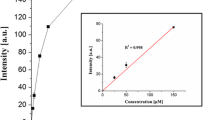Abstract
We compared the ability of three intradermal delivery devices to administer an intended dose to pig skin in vivo and target that dose to the dermal rather than subcutaneous layers. The three devices were a standard hypodermic needle and syringe for the Mantoux technique, an adapter designed to facilitate proper hypodermic needle and syringe use, and a hollow microneedle. Reliability was determined as the percentage of the administered dose that entered the skin, as opposed to remaining in the device or on the skin surface. The intradermal adapter (97.6 ± 1.5 % delivered, mean ± standard deviation), Mantoux technique (95.4 ± 4.9 %), and hollow microneedle (94.9 ± 0.3 %) exhibited similar reliability. Accuracy was determined as the percentage of the dose that entered the skin that localized in the dermis. All three devices achieved similar accuracy: hollow microneedle (99 ± 12 % delivered to the dermis, median ± standard deviation), Mantoux technique (97 ± 16 %), and intradermal adapter (92 ± 21 %). We conclude that intradermal injection by all three methods studied provided reliable delivery to the skin and provided accurate localization of delivery within the dermis. Next-generation designs of these devices have now received clearance from the FDA and are used as medical products and/or in clinical trials.




Similar content being viewed by others
References
Hickling JK, Jones KR, Friede M, Zehrung D, Chen D, Kristensen D. Intradermal delivery of vaccines: potential benefits and current challenges. Bull World Health Organ. 2011;89(3):221–6. doi:10.2471/BLT.10.079426.
McPhee S, Papadakis MA, Rabow MW. Current medical diagnosis and treatment. 51st ed. New York: McGraw Hill; 2012.
Todd G, John A, Vacchiano C, Pellegrini J. Intradermal ketorolac for reduction of epidural back pain. Int J Obstet Anesth. 2002;11(2):100–4. doi:10.1054/ijoa.2001.0936.
Norman JJ, Brown MR, Raviele NA, Prausnitz MR, Felner EI. Faster pharmacokinetics and increased patient acceptance of intradermal insulin delivery using a single hollow microneedle in children and adolescents with type 1 diabetes. Pediatr Diabetes. 2013. doi:10.1111/pedi.12031.
McVey E, Hirsch L, Sutter DE, Kapitza C, Dellweg S, Clair J, et al. Pharmacokinetics and postprandial glycemic excursions following insulin lispro delivered by intradermal microneedle or subcutaneous infusion. J Diabetes Sci Technol. 2012;6(4):743–54.
Daddona PE, Matriano JA, Mandema J, Maa YF. Parathyroid hormone (1–34)-coated microneedle patch system: clinical pharmacokinetics and pharmacodynamics for treatment of osteoporosis. Pharm Res. 2011;28(1):159–65. doi:10.1007/s11095-010-0192-9.
Kim YC, Jarrahian C, Zehrung D, Mitragotri S, Prausnitz MR. Delivery systems for intradermal vaccination. Curr Top Microbiol Immunol. 2012;351:77–112. doi:10.1007/82_2011_123.
Mantoux Tuberculosis Skin Test Facilitator Guide. Centers for Disease Control and Prevention. 2012. http://www.cdc.gov/tb/education/mantoux/part1.htm. Accessed 30 Jul 2013.
Tarnow K, King N. Intradermal injections: traditional bevel up versus bevel down. Appl Nurs Res. 2004;17(4):275–82.
Flynn PM, Shenep JL, Mao L, Crawford R, Williams BF, Williams BG. Influence of needle gauge in Mantoux skin testing. Chest. 1994;106(5):1463–5.
Martanto W, Moore JS, Couse T, Prausnitz MR. Mechanism of fluid infusion during microneedle insertion and retraction. J Control Release: Off J Control Release Soc. 2006;112(3):357–61. doi:10.1016/j.jconrel.2006.02.017.
Martanto W, Moore JS, Kashlan O, Kamath R, Wang PM, O’Neal JM, et al. Microinfusion using hollow microneedles. Pharm Res. 2006;23(1):104–13. doi:10.1007/s11095-005-8498-8.
Laurent PE, Bonnet S, Alchas P, Regolini P, Mikszta JA, Pettis R, et al. Evaluation of the clinical performance of a new intradermal vaccine administration technique and associated delivery system. Vaccine. 2007;25(52):8833–42. doi:10.1016/j.vaccine.2007.10.020.
Gupta J, Felner EI, Prausnitz MR. Minimally invasive insulin delivery in subjects with type 1 diabetes using hollow microneedles. Diabetes Technol Ther. 2009;11(6):329–37. doi:10.1089/dia.2008.0103.
Poortman GH, den Breejen A, van der Valk PD, van der Palen J. General knowledge of the performance of Mantoux-test procedure deemed inadequate. Ned Tijdschr Geneeskd. 1999;143(16):851–5.
Ali NS, Jamal K, Khuwaja AK. Family physicians understanding about Mantoux test: a survey from a high endemic TB country. Asia Pac Fam Med. 2010;9(1):8. doi:10.1186/1447-056X-9-8.
Jarrahian C, Zehrung D, Saxon E, Griswold E, Klaff L. Clinical performance and safety of the ID adapter, a prototype intradermal delivery technology for vaccines, drugs, and diagnostic tests. 5th Vaccine and Isv Annual Global Congress. 2012;6:125–33. doi:10.1016/j.provac.2012.04.017.
van Damme P, Oosterhuis-Kafeja F, Van der Wielen M, Almagor Y, Sharon O, Levin Y. Safety and efficacy of a novel microneedle device for dose sparing intradermal influenza vaccination in healthy adults. Vaccine. 2009;27(3):454–9. doi:10.1016/j.vaccine.2008.10.077.
Acknowledgments
Donna Bondy provided administrative assistance. Brian Bondy assisted with histological analysis. Support for this project was provided through funding from private foundations and individual donors to the Health Innovation Portfolio at PATH.
Conflict of interest
Mark Prausnitz is an inventor of patents that have been licensed to companies developing microneedle-based products, is a paid advisor to companies developing microneedle-based products, and is a founder/shareholder of companies developing microneedle-based products. This potential conflict of interest has been disclosed and is managed by Georgia Tech and Emory University. Samir Patel is the director of research and new product development for a company developing microneedle products for ocular drug delivery. The remaining authors declare no conflict of interest.
Declaration for animal studies
All institutional and national guidelines for the care and use of laboratory animals were followed.
Author information
Authors and Affiliations
Corresponding author
Rights and permissions
About this article
Cite this article
Norman, J.J., Gupta, J., Patel, S.R. et al. Reliability and accuracy of intradermal injection by Mantoux technique, hypodermic needle adapter, and hollow microneedle in pigs. Drug Deliv. and Transl. Res. 4, 126–130 (2014). https://doi.org/10.1007/s13346-013-0184-5
Published:
Issue Date:
DOI: https://doi.org/10.1007/s13346-013-0184-5




